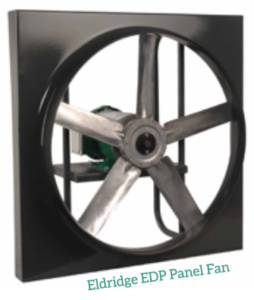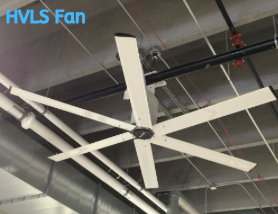WHAT LEVEL OF VENTILATION DO YOU NEED
Summertime heat greatly influences worker productivity and absenteeism. For large facilities where air conditioning is impractical, a properly designed general ventilation system can greatly reduce heat related stress. However, there is a certain order to creating a ventilation system where all of the components are working together to deliver a cost-effective solution. In this article, I’ll go through the progressive levels of building the best ventilation system for your facility.
Level 1 – Ambient Conditions
 The first level of any ventilation system is to make the temperature and humidity conditions inside the building the same as the outside. Radiated heat from the building’s roof and walls combined with any heat generated from machines, ovens or furnaces can significantly raise the inside temperature. Also, tight building envelopes can be a trap for humidity resulting in condensation. Eliminating excess heat and humidity requires designing a ventilation system that will consistently move a sufficient volume of ambient air through a building.
The first level of any ventilation system is to make the temperature and humidity conditions inside the building the same as the outside. Radiated heat from the building’s roof and walls combined with any heat generated from machines, ovens or furnaces can significantly raise the inside temperature. Also, tight building envelopes can be a trap for humidity resulting in condensation. Eliminating excess heat and humidity requires designing a ventilation system that will consistently move a sufficient volume of ambient air through a building.
A powered ventilation system utilizing appropriately sized fans for either supply or exhaust airflow is the most consistent and cost-effective Level 1 solution to achieve ambient conditions inside a building. The best Level 1 ventilation system designs will take into consideration:
- Building height and orientation
- Wind direction and obstructions
- Supply and exhaust air locations
- Other internal air requirements for dust collection or combustion
Level 2 – Personal Cooling
When the air temperature gets too hot, the body tries to cool itself by producing sweat. Using a fan to increase the evaporation of sweat provides the sensation of cooling. Personal cooling fans are considered the second level to any building ventilation system because they are working at their most effective level when the building is at ambient conditions.  Too often, we hear customers say they want to skip the first level of ventilation and go straight to personal cooling fans. The danger in doing that is these fans can blow very hot air from the top of the building on to workers and actually make them feel hotter.
Too often, we hear customers say they want to skip the first level of ventilation and go straight to personal cooling fans. The danger in doing that is these fans can blow very hot air from the top of the building on to workers and actually make them feel hotter.
Because personal cooling fans don’t actually cool the air, they are only effective when their air streams are directed to where workers are present. Column or floor mounted fans work best for relatively stationary workers. HVLS fans hung from roof joists are a more cost-effective solution for covering a larger area. They are also good for moving air to minimize condensation on concrete floors.
Level 3 – Evaporative Cooling
An evaporative cooler can take a ventilation system to the next level by providing cost-effective localized cooling. Where humidity levels are below 60%, an evaporative or “swamp” cooler can lower the temperature by as much as 20 degrees. The downside to evaporative coolers is that they raise the humidity level of the exhaust air so it is important to use them only as an addition to a properly designed Level 1 system.
Design Based on Need
Whatever level of ventilation your needs are currently, the experts at Eldridge know how to assess and design the best ventilation system for your facility. Eldridge makes the process of improving your ventilation system simple with our customized turnkey solutions. Don’t let the temperatures rise too high before calling one of the Eldridge team for your personalized solution.

